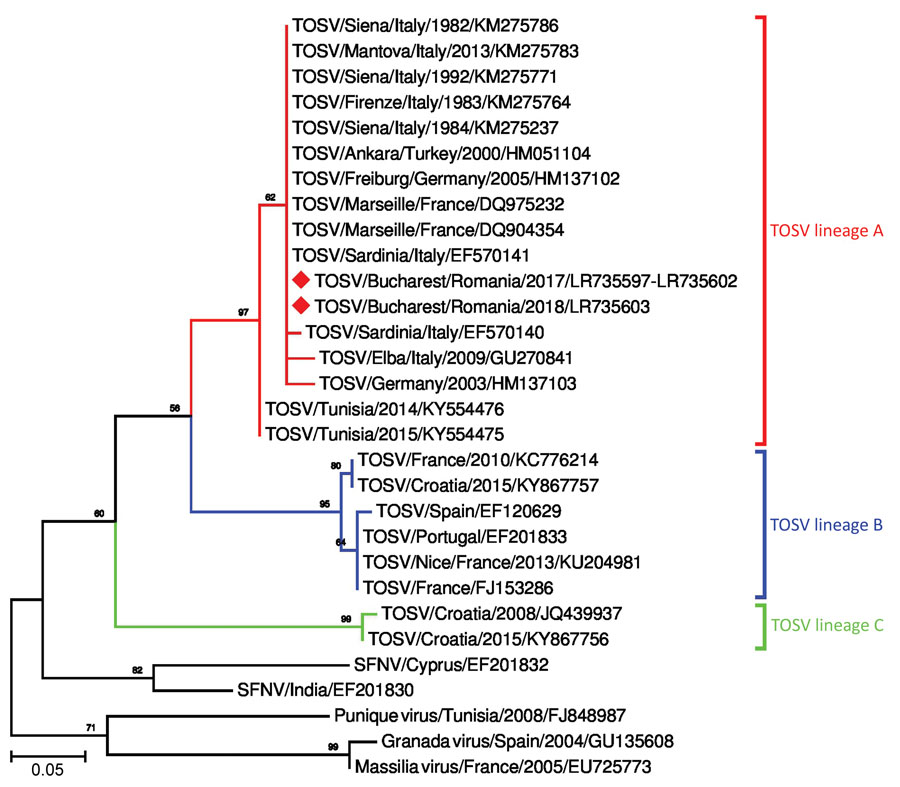Volume 27, Number 5—May 2021
Dispatch
Emergence of Toscana Virus, Romania, 2017–2018
Figure

Figure. Phylogenetic tree of TOSV identified in 8 patients, Bucharest and surrounding area, Romania, 2017–2018, and reference sequences. Red diamonds indicate sequence obtained in this study; the other sequences included in the analysis were retrieved from GenBank. Numbers at nodes represent bootstrap percentages (values <50% are not shown). Phylogenetic relatedness was inferred from a 111-nt sequence of nucleocapsid gene, small segment (positions 1392–1502, numbering according to GenBank accession no. NC_006318.1) by using the neighbor-joining, Kimura 2-parameter method and 1,000 bootstrap replicates. SFNS, sandfly fever Naples virus; TOSV, Toscana virus.
1These authors contributed equally to this article.
Page created: March 21, 2021
Page updated: April 22, 2021
Page reviewed: April 22, 2021
The conclusions, findings, and opinions expressed by authors contributing to this journal do not necessarily reflect the official position of the U.S. Department of Health and Human Services, the Public Health Service, the Centers for Disease Control and Prevention, or the authors' affiliated institutions. Use of trade names is for identification only and does not imply endorsement by any of the groups named above.